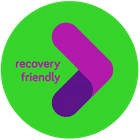Ketamine Therapy: Until recently, ketamine has been relatively rare, known mostly as a horse tranquilizer. Initially developed in 1962 as a short-acting veterinary anesthetic, it has gained significant attention for its potential as a breakthrough therapy for mental health conditions. This dissociative anesthetic has become standard in various medical settings, including surgery, but its novel applications in mental health treatment have captured the interest of researchers and clinicians alike.
Since a nasal ketamine spray for treatment-resistant depression (TRD) received FDA approval in 2019, ketamine therapy has been on many researchers’ minds. At GateHouse Treatment, we stay current with all scientific therapy and drug treatment developments. This dedication gives us an edge in providing the best care possible on the road to sobriety and holistic wellness. In this article, we will explore what ketamine is and delve into recent developments in ketamine therapy, shedding light on its uses and efficacy in treating mental health disorders.
1. What is Ketamine?
Ketamine was developed primarily as an anesthetic. Its journey began in the early 1960s when Dr. Calvin Stevens, a scientist working for the pharmaceutical company Parke-Davis (now a part of Pfizer), first synthesized it. The compound quickly attracted attention for its unique pharmacological properties. Ketamine distinguished itself from other dissociative anesthetics like PCP by being milder, working quicker, and having minimal impact on respiratory functions, which made it safe.
Soon, it was available as a surgical anesthetic in the Vietnam War. However, it was another one of ketamine’s properties that caught the public attention. Ketamine is a dissociative with mild hallucinogenic properties. During its first human administration in 1964, the subjects reported feeling as if they were “floating in outer space.”
A well-known concept associated with ketamine is a “K-hole,” an intense dissociative state experienced at higher doses. It is documented as a profound and immersive sensory and perceptual alteration, leading to a feeling of detachment from one’s body and surroundings. Ego dissolution may occur, and the boundaries of the self can become blurred, which can be an uncomfortable and overwhelming experience paired with visual and auditory hallucinations.
Ketamine became a popular drug in the counter-culture movement. Its recreational uses captured public attention more than its potential as a pharmaceutical, so researchers didn’t explore its value in treating mental health until the 1990s. When Dr. Robert Berman and his colleagues at Yale University serendipitously discovered its rapid and robust antidepressant effects. Their research demonstrated that subanesthetic doses of ketamine-induced remarkable improvements in depressive symptoms, even in individuals who had not responded to traditional antidepressant medications. Strikingly, ketamine could produce improvements in hours or days.
Since the initial discoveries, there have been numerous clinical trials conducted to evaluate the efficacy and safety of ketamine in treating various mental health conditions, including depression, post-traumatic stress disorder (PTSD), bipolar disorder, and obsessive-compulsive disorder (OCD). The results have been promising, leading to expanded research, increasing acceptance within the medical community, and recognition by the FDA.
3. How Ketamine Works on the Brain
Neurotransmitters are the brain’s messengers, carrying signals between nerve cells (neurons) that ensure proper functioning and cognition. Glutamate is the most common excitatory neurotransmitter involved in various brain functions, including mood regulation. Scientists believe it may have a large role to play in depression. Ketamine acts on the glutamate system, specifically the brain’s N-methyl-D-aspartate (NMDA) receptors, increasing glutamate production and enhancing signaling. This function may be behind the drug’s potency against treatment-resistant depression.
Another explanation behind ketamine’s success has to do with synaptic plasticity. While that sounds complicated, the concept is rather simple. Plasticity reflects one’s ability to adapt. When two neurons interact with each other at a synapse, which is the small space between the two cells when they are communicating, synaptic plasticity has to do with the strength of that communication. Ketamine promotes the growth and strengthening of synapses, particularly in the prefrontal cortex, a brain region implicated in mood regulation and depression.
Finally, ketamine activates the mTOR pathway, a protein that regulates cell survival, growth, and creation. This activation spurs the synthesis of proteins that further strengthen the brain’s connection with itself, restoring neural circuits involved in mood regulation.
3. Ketamine Therapy Research
It’s important to note that research on many of these conditions is still early. Approval for treatment moves slowly, and clinical studies sometimes take years to complete. Here is a review of the current avenues for ketamine therapy.
- Treatment-Resistant Depression: One of the most well-studied applications of ketamine is treating TRD, a form of depression that does not respond to conventional antidepressant medications. Numerous clinical trials and meta-analyses have shown rapid and robust antidepressant effects of ketamine in TRD patients, even in individuals who have failed multiple antidepressant treatments.
- Major Depressive Disorder (MDD): Studies have indicated that ketamine infusion rapidly improves depressive symptoms, with some patients experiencing sustained relief for several weeks. This treatment has been particularly effective in mitigating suicidal ideation.
- Post-Traumatic Stress Disorder (PTSD): Research suggests that ketamine infusions can reduce the intensity of traumatic memories and enhance the efficacy of psychotherapy. Furthermore, ketamine-assisted therapy has shown promise in promoting emotional processing and reducing avoidance behaviors in individuals with PTSD.
- Bipolar Disorder: While research is still in its early stages, some evidence suggests that ketamine may have a rapid and robust antidepressant effect in individuals with bipolar depression. However, further investigation is necessary to determine the optimal dosage, duration, and long-term effects of ketamine treatment for bipolar disorder.
- Anxiety Disorders: Although research on ketamine’s effectiveness in anxiety disorders is relatively limited compared to depression, some studies suggest its potential benefits. Ketamine is under review as a potential treatment for social anxiety disorder, generalized anxiety disorder, and obsessive-compulsive disorder.
GateHouse Treatment and You
At GateHouse Treatment, we are wellness experts. We aim to offer thorough treatment for you as an individual, not just drug treatment that ignores underlying causes and general well-being. In addition to traditional therapy methods such as outpatient and partial hospitalization programs, we offer cutting-edge techniques like biofeedback therapy, which allows you to impact your body’s autonomic processes. We also partner with comfortable sober homes to give you a calm environment for recovery.
We are always looking for new scientific developments to help you or your loved ones remain sober and take control of your life. Call (855) 448-3588 for a free consultation or reach out through our website.
- Cymbalta Withdrawal: Causes, Symptoms, And Management - October 12, 2023
- Boredom in Recovery: 5 Tips to Avoid Relapse - October 6, 2023
- Overconfidence and Rehab: Avoiding Relapse - October 4, 2023




